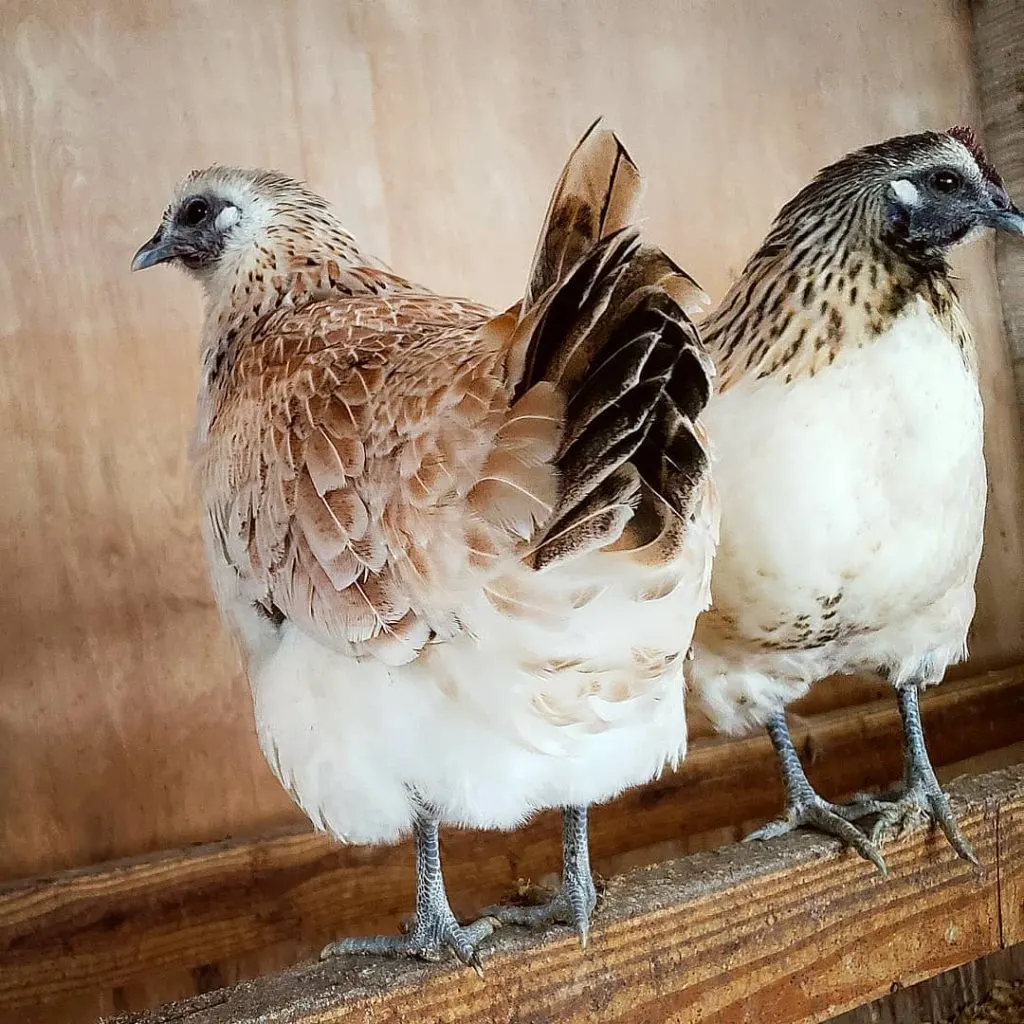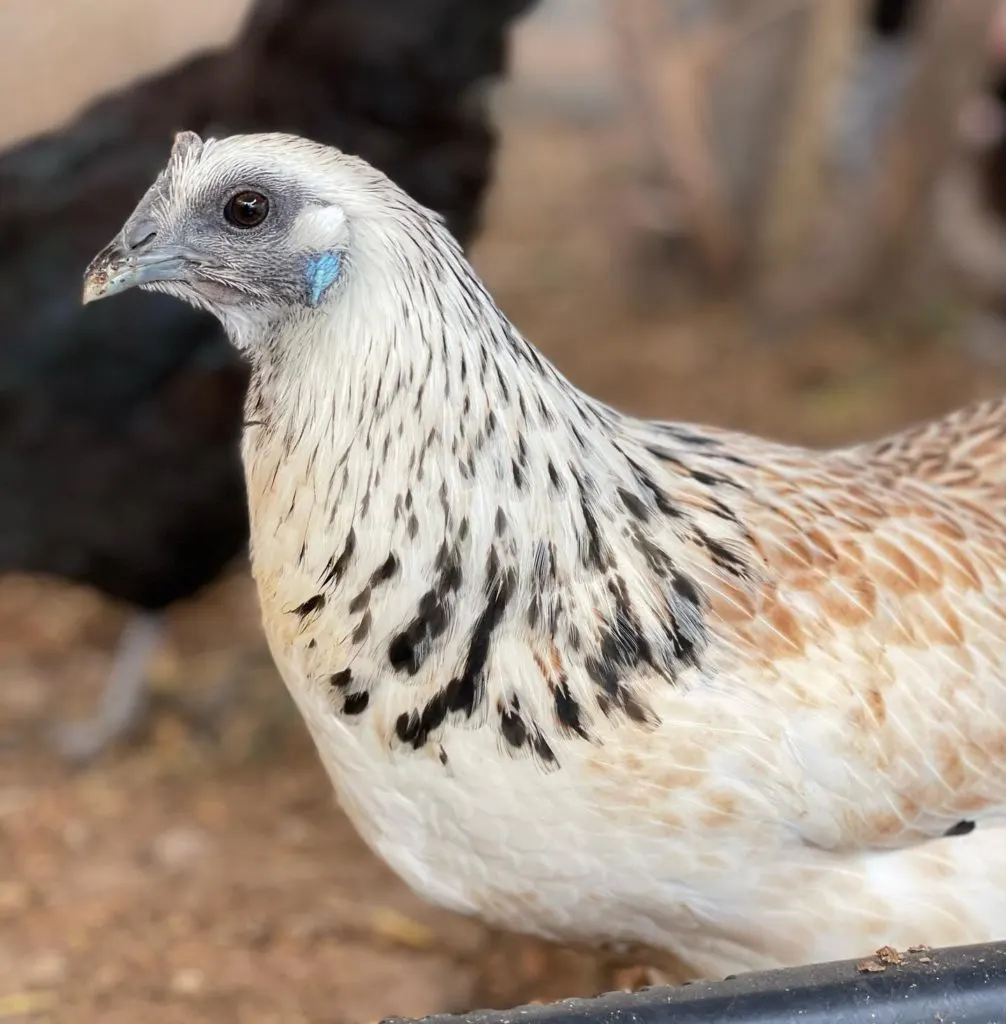Mosaic chickens are an eye-catching breed that have been gaining popularity among poultry farmers and backyard chicken keepers.
They are not considered to be an actual chicken breed, but rather a chicken that is composed of other chicken breeds.
Just like mosaic art is typically made up of different colored pieces that are placed together to create an image, Mosaic chickens are similar. These chickens are known for their unique feather patterns that resemble a mosaic art piece, hence the name.
In this article, we will discuss:
- An overview and history of the Mosaic chicken
- Mosaic Chicken Appearance
- Their eggs and egg production
- Mosaic chicken temperament
- Care requirements for the Mosaic chicken
- And some frequently asked questions
After reading this post, you will have a better understanding of the Mosaic chicken breed and you will be able to decide for yourself if you want to add these chickens to your flock.
Mosaic Chicken Overview
Below is a table with an overview of the Mosaic Chicken:
| Lifespan | 4-5 years |
| Weight | Hens: 6 – 6.5 pounds Roosters: 8 – 8.5 pounds |
| Appearance | Black, white, blue, or yellow |
| Egg Color | Cream |
| Egg Production | Around 200-250 eggs yearly |
| Broodiness Level | Low |
| Beginner Friendly | Medium |
| Space Required | 3 square feet inside the coop, 7-9 square feet outdoors |

Mosaic Chicken History
Mosaic chickens are fairly new to the chicken world. So new in fact that you may have never seen one or heard of one before.
These chickens were developed by Gold Feather Farms after years of testing and breeding.
This farm has chosen and bred fibro melanistic chickens which has resulted in the Mosaic chicken.
Fibromelanosis is a mutation that is expressed as hyperpigmentation in chickens. This causes all or parts of the bird to appear black in color.
Typically this includes the skin, bones, and organs of the bird.
Mosaic Chicken Appearance
Mosaic chickens have a striking appearance due to their feather patterns.
The base color of their feathers can range from frost white to black, and they have patches of iridescent feathers that reflect different colors in the light.
This gives them a beautiful and unique look that sets them apart from other chicken breeds. They are also known for their red earlobes and bright yellow beaks and legs.
Mosaic Chicken Eggs
Mosaic chickens lay medium-sized, cream-colored eggs.
They typically lay around 200-250 eggs per year, making them excellent egg layers.
Mosaic Chicken Meat & Egg Production
Mosaic chickens are not typically bred for meat production, but they do lay a good number of eggs.
They are known to be good layers, with some hens producing up to 200 eggs per year.
However, it is important to note that egg production can vary depending on the individual bird and its living conditions.
Healthy hens that are given a proper diet, a low-stress environment, and a protective shelter tend to lay more eggs.
Broodiness
Mosaic chickens are not typically broody.
This means that you will need to collect and incubate the eggs yourself, as they will not sit on their own eggs.
Mosaic Chicken Breed Standard
According to the American Poultry Association, Mosaic chickens are not yet recognized as a standard breed.
This means that there is no official breed standard for them.
However, there are some characteristics that are typically associated with the breed, such as their feather pattern and coloring.
Mosaic Chicken Temperament & Personality
Mosaic chickens are known for their docile and friendly nature.
They are sociable and enjoy human interaction, making them great pets for families. They are also good foragers and love to roam and scratch around the yard.
Mosaic chickens are very clever and have great predator awareness. They can easily detect when they are in danger and get themselves out of harm’s way.
While they aren’t the quietest chickens in the flock, their noise level is tolerable. They also do well in confinement, however, it’s best to provide as much space as possible.
It’s important to keep Mosaics with other chicken breeds that are also very docile in nature, as they can easily get bullied by aggressive breeds.

Care Requirements
Mosaic chickens are very docile and fairly easy to care for. They are happiest when given proper handling, feeding, and housing.
Feeding
Mosaic chickens thrive with a proper diet.
They require lots of protein and calcium since they are such great egg layers.
For the first few weeks of life, Mosaic chicks should eat a chick starter feed containing 18% to 24% protein. This feed is necessary through their first 6 weeks.
Upon maturity, you can begin introducing a feed containing 16% to 18% protein to adult Mosaics.
Just like with other mature hens, Mosaic hens require calcium to keep their eggs strong and healthy.
This can be provided by offering them crushed oyster shells or black fly larvae along with their typical feed.
Housing
Mosaic chickens are typically heat and cold-hardy depending on the type of bird you have.
However, these birds still need proper care and the right environment to thrive.
They need shade in hot temperatures and heat in extremely cold weather.
These birds also require a protected environment away from potential predators, and a safe coop to return to at night.
Each Mosaic chicken needs at least 3 square feet of space per bird inside their coop and about 7-9 square feet outdoors. Although it never hurts to provide more space if possible.
Tight and cramped spaces can result in bullying, feather picking, or diseases spreading.
It’s also important to provide a dust bath for your chickens in order to avoid lice and mites.
Overall, Mosaic chickens are fairly healthy and hardy. Be aware of common health concerns such as egg-laying issues, basic injuries, parasites, and lice and mites.
Free-Ranging
Although Mosaics are clever and can typically detect predators, it is still important to keep them protected, even when free-ranging.
If there is not a fence protecting them while out of the coop, you run a much higher risk of them being attacked by predators.
Birds of prey, stray dogs and cats, and other large animals can hunt your chickens out in broad daylight.
That being said, free-ranging is a great option for Mosaics, as it allows for additional nutrients in your chicken’s diet on top of their regular feed.

Final Thoughts
As you can see, Mosaic chickens are a beautiful and unique breed with a friendly temperament.
While not yet recognized as a standard breed, they are still a great addition to any backyard flock.
Whether you are looking for a pet or a good egg layer, mosaic chickens are sure to delight with their stunning feather patterns and gentle nature.
FAQs
Are Mosaic chickens autosexing?
Mosaic chickens are not an auto-sexing chicken breed or a sex-linked breed.
The sex of these birds can not be marked and will not produce visually sexable chicks.
You can determine the sex of Mosaic chickens by vent sexing or feather sexing.
Is the Mosaic chicken friendly?
Mosaic chickens are known to be quite docile and friendly.
This makes them great for beginner keepers who are looking to add a friendly bird to their flock.
It is important to keep Mosaics with other docile breeds to avoid bullying from more aggressive breeds.
Are Mosaic chickens good for egg production?
Yes, Mosaic chickens are generally a good option if you are looking to put lots of fresh eggs on your table.
They lay around 200-250 medium-sized eggs per year and will even keep laying during the winter if given proper living conditions.

